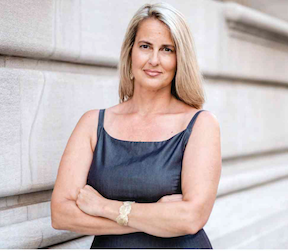Woman Starts Nonprofit To Improve Concussion Management in Females
For Katherine Snedaker, concussions seemed a part of her life. Her son had ten concussions over a four year period from middle school to high school. She says she has had about 25 concussions in her life.

Katherine Snedaker started her nonprofit Pink Concussions to raise awareness about concussions in females. Her goal was to empower women through knowledge.
After her son’s injuries, she started working as a concussion social worker. One thing she noticed was that the girls weren’t getting better. She started a support group for girls with concussions. She wanted to figure out why it was the girls who kept getting post-concussion syndrome.
In 2013, she started her nonprofit Pink Concussions and took the same three facts around the world to educate people better about concussions in women and girls. These three facts are that women (on average):
- Sustain more concussions at a higher rate than their male counterparts in sports with similar rules
- Report a higher number, and more severe, symptoms than males
- Have longer recovery periods than males
Snedaker claims that the whole concept of her nonprofit comes down to this: there are more male concussions than female. Men are the bigger risk takers. Any woman may know one or two males with concussion, but not know a single female. For men, their recovery period lasts on average 7 to ten days. For women, the recovery can take longer. “She’s going to judge her own experience by the male experience not the female experience,” Snedaker says.
If a woman’s taking three months to heal, she might think something is wrong and get stressed out. Her nonprofit PINK Concussions is focused on telling people about the differences between male and female concussions, so they are aware. Snedaker hosts concussion conferences where international female researchers present their work to medical providers and sports doctors. The next confirmed conference will be March 2nd through 3rd at NIH.
The sex differences in male and female brains are without a doubt present. The social gender differences are a little harder to prove. Some people might suggest that women can’t take the pain, or maybe they are more likely to report symptoms than males. These social explanations are hard to scientifically prove.
The medical community is slowly becoming aware this information, according to Snedaker. They just now need to bring this information to their patients. They need to fill the education gap. And then maybe when a woman is taking months to heal from a concussion, she will be prepared by the information she was given for the support she will need.
“The idea was to educate women through the concussion clinics to be more empowered,” Snedaker said.